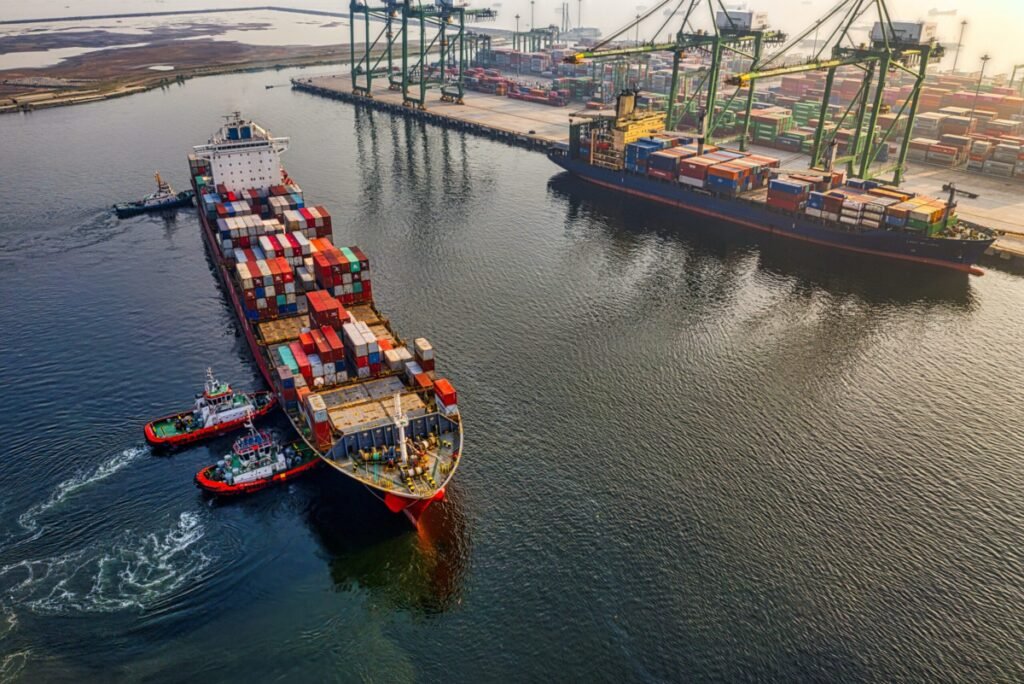In an ideal situation, businesses could run the operations where they have the exact number of supplies they need, and you’d be perfectly efficient with no supply chain disruptions. That doesn’t happen in reality, but you can get close to this by having a Supply Chain Analyst. According to BLS, the employment of supply chain analysts is projected to grow 30% from 2020-2030. The global supply chain analytics market was estimated at $4.53 Billion in 2019 and is projected to increase to $16.82 Billion by 2027.
10 Important Reasons to have a Supply Chain Analyst
What is Supply Chain Analytics?
The traditional supply chain execution model is becoming more cumbersome with a mix of operating systems, excessive pressure from pricing systems, and increasing customer expectations.
Additionally, global economic impacts like global recession, increasing fuel costs, and competition from low-cost business outsources. Unless analyzed all these factors, it creates potential waste in the supply chain business.
There comes supply chain analytics or data analytics solutions in the supply chain. The supply chain and many industries use it to make better business decisions using existing theories.
Thus, the use of analytics tools gives a competitive advantage. Implementation of supply chain analytics along with tools can capture and analyze the massive amount of accumulated data due to a product moving from one point to another.
Supply chain analytics is a form of representation of all data generated from various segments of the supply chain. All this data is collected, processed, and displayed in a visual representation tool in a meaningful way, for example, in the form of charts and graphs.
A business can make planning and future decisions based on these graphs and charts. “Treasure hunt,” a common term used in the supply chain, often refers to digging through a massive amount of generated data due to a single operation of the supply chain.
This “Treasure hunt” needs proper plans of operations and the application of tight tools. Alongside this, it needs an appropriate strategy roadmap to represent relevant data instead of presenting too much information.
10 Important Reasons to Have a Supply Chain Analyst
1. Uncovered Patterns
Analysts use data and math to answer business questions. They discover relationships, predict unknown outcomes and automate decisions.
This diverse field of analytics is used to find meaningful patterns and data. They uncover new knowledge based on applied mathematics, statistics, predictive modeling, and machine learning techniques.
2. Industry and Business
Today, Supply chain analysts are transforming businesses, industries, and logistics is no exception. The complex and dynamic nature of this work and the intricate structure of the supply chain make analytics a perfect use for data utilization and interpretation.
3. Add Value
To fulfill the purpose that supplies reach their final destination, various individuals, routes, spaces, and times must align properly, creating a value-added supply chain.
This process is not always smooth and is often plagued by delays, inefficient communication, and problems which is where the role of supply chain analysts comes in.
Supply chain analysts analyze current tasks and processes and suggest improvements for supply to meet demand.
4. Responsible for Every Stage
Supply chain analysis is required in various industries, the most common being manufacturing, technology, governments, and the food industry. Supply chain analysts are responsible for analyzing the life cycle of how goods are moved from the planning stages to the end consumer.
It involves three steps:
-
Analyzing Data
First, they analyze data from the company and its supply chain warehouses.
-
Pain Areas
This involves finding out the pain areas.
-
Change
This includes suggesting changes or improvements in the supply chain process, cost-cutting, and other business problems that are points of concern.
5. Taking Care of Other Departments
Supply chain analysts also collaborate with their colleagues from various other departments, such as:
- Finance
- Sales
- Production
- Design
- Marketing
- Project Management Team
- Customer Support
It requires that a supply chain analyst can communicate with vendors to:
- Address problems
- Negotiate better desks
- Form better relationships
6. A Skilled Employee
An analyst in supply chain and operations have a variety of skills, such as:
- Analytical
- Mathematical
- Logical
- Interpersonal skills
- Strategically thinking
However, he would be a top-notch in:
- Inventory Management Skills
- Knowing in and out of different processes present in the business
- Mathematical skills
- Interpersonal skills
- Data analysis and forecasting
7. Helps Environment
A supply chain analyst helps the environment through optimization. They try to reduce waste, reduce transportation and storage costs, and help the dealers do business.
They do their part in supply chain planning and inventory and have the right product for the right time. This way, the distributors can carry more or order more than the demand.
They make sure that they contact a third-party consolidator that ensures that even if you are buying from 20 different vendors, the third-person will consolidate all your products into one container so that instead of shipping a bunch of half empty containers, you get one complete container that is being shipped.
This shows consciousness about the impact on the environment.
8. Prediction of Products
Supply chain analysts predict the demand for the products by knowing the popularity of each of your products. This allows you to optimize your warehouse and the cost of your storage.
High-demand products will be ordered frequently and should be put in front of your warehouse. On the other hand, products with lower demand will only be called sometimes and can be put in the back of your warehouse.
Also, knowing the approximate demand for each product allows you to manage your inventory well. This will prevent over or under-stocking.
9. Prediction of Demand
Predicting your customer’s demand is slightly different from addicting with the order of your products. But it will give you a lot of new opportunities.
Knowing which customer will order your product on which day gives you more time to optimize your transport. You can make better decisions about outsourcing your orders to other parties.
You can also optimize your Human Resource schedules. If you know peaks in your workload beforehand, you can choose to keep fewer people on standby. This reduces your costs and gives your people a more predictable work environment.
10. Predict Machine Failure
Machine failure can cause parts of your supply chain to slow down or stop completely until the problem is fixed. That can lead to severe costs.
Luckily, most machines are equipped with various sensors for various measurements, such as temperature and voltage. These measurements can be combined with other information about the device to predict when the machine will fail.
This allows you to schedule maintenance before the machine breaks. It also allows you to stall maintenance on machines that are unlikely to fail shortly. This reduces the costs of your operations.
Types of Supply Chain Analytics Techniques and Metrics
1. Stock Turnover Ratio and Stock Pressure
The stock turnover ratio indicates the number of days the current stock will last with the outlets, assuming the current sales rate of the respective product.
Stock pressure indicates how well the brand is stocked relative to your competition. These two metrics help companies maintain stock at outlets.
2. Forecast of Sales
Forecasting sales helps organizations in two easy ways: determining future revenue and planning for future demand. You will use the forecasting function in excel to forecast future sales of the company.
3. Numeric and Weighted Out of Stock Percentage
Numeric out-of-stock measures the number of stores where the company brand is out of stock. Weighted out-of-stock is a calculation of opportunity loss due to out-of-stock in high throughout stores.
4. Vehicle Routing Problem Analysis
This analysis helps the supply chain team manage the vehicle’s proper route so that delivery is at the optimum time with less effort. The vehicle routing problems solve the following questions:
- What is the optimal set of ways for a fleet of vehicles to traverse to deliver to a given set of customers?
5. Order Fill Rate and Perfect Order Metrics
Order fill rate is defined as the percentage of orders that can be filled based on the inventory at hand. Perfect order metrics take into account various matrices.
It is a dynamic KPI that checks factors like “If this shipment has been delivered at the right time in the proper condition to the right customer and with a correct invoice.
Advantages of Supply Chain Analytics
-
Gain a Significant ROI
A recent Gartner survey revealed that 29% of surveyed organizations said they had achieved high levels of ROI by using analytics, compared with only 4% that achieved no ROI.
-
Increased Accuracy in Planning
By analyzing customer data, supply chain analytics can help a business predict future demand efficiently.
-
Achieve the Lean Supply Chain
Enhanced productivity through monitoring warehouses, partner responses, and customer needs for informed decisions.
-
Increasing Sales
With technology, transform, change and improve the numbers. Highlight slow-moving or redundant stock, where forecasts have been wrong and estimate inaccurate.
-
Enhanced Responsive Transport Logistics
By using supply chain analytics, the company can improve the functioning of your transport logistics processes.






![How to Improve Interpersonal Skills? [6 Steps] 7 How to Improve Interpersonal Skills](https://zoets.b-cdn.net/wp-content/uploads/2024/02/pexels-fauxels-3184357-scaled-e1708708387711.jpg)
![How to Improve Employee Welfare? [7 Ways] 8 How to Improve Employee Welfare](https://zoets.b-cdn.net/wp-content/uploads/2024/02/pexels-alexander-suhorucov-6457577-scaled-e1708707251724.jpg)



